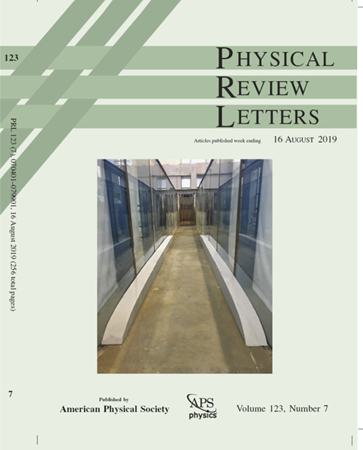Interaction Renormalization and Validity of Kinetic Equations for Turbulent States
IF 8.1
1区 物理与天体物理
Q1 PHYSICS, MULTIDISCIPLINARY
引用次数: 0
Abstract
We consider turbulence of waves interacting weakly via four-wave scattering (sea waves, plasma waves, spin waves, etc.). In the first order in the interaction, a closed kinetic equation has stationary solutions describing turbulent cascades. We show that the higher-order terms generally diverge both at small (IR) and large (UV) wave numbers for direct cascades. The analysis up to the third order identifies the most UV-divergent terms. To gain qualitative analytic control, we sum a subset of the most UV divergent terms, to all orders, giving a perturbation theory free from UV divergence, showing that turbulence becomes independent of the dissipation scale when it goes to zero. On the contrary, the IR divergence (present in the majority of cases) makes the effective coupling parametrically larger than the naive estimate and growing with the pumping scale L (similar to anomalous scaling in fluid turbulence). In such cases, the kinetic equation does not describe wave turbulence even of arbitrarily small level at a given我们考虑的是通过四波散射(海浪、等离子波、自旋波等)弱相互作用的波的湍流。在相互作用的一阶,一个封闭的动力学方程有描述湍流级联的静态解。我们的研究表明,对于直接级联,高阶项在小波数(红外)和大波数(紫外)时一般都会发散。三阶以下的分析确定了最多的紫外发散项。为了获得定性分析控制,我们对所有阶次的最大紫外发散项的子集进行了求和,从而得到了一个没有紫外发散的扰动理论,表明当耗散尺度为零时,湍流变得与耗散尺度无关。相反,红外发散(存在于大多数情况下)使得有效耦合参数大于天真的估计值,并且随着泵送尺度 L 的增大而增大(类似于流体湍流中的反常缩放)。在这种情况下,如果 kL 足够大,即级联足够长,那么动力学方程即使在给定 k 下也无法描述任意小的波湍流。我们证明,强湍流的特征取决于有效四波相互作用是被集体效应增强还是抑制。增强可能表明强湍流由多波束缚态(孤子、冲击、尖顶)主导,类似于量子色动力学中的束缚。 美国物理学会出版 2024
本文章由计算机程序翻译,如有差异,请以英文原文为准。
求助全文
约1分钟内获得全文
求助全文
来源期刊

Physical review letters
物理-物理:综合
CiteScore
16.50
自引率
7.00%
发文量
2673
审稿时长
2.2 months
期刊介绍:
Physical review letters(PRL)covers the full range of applied, fundamental, and interdisciplinary physics research topics:
General physics, including statistical and quantum mechanics and quantum information
Gravitation, astrophysics, and cosmology
Elementary particles and fields
Nuclear physics
Atomic, molecular, and optical physics
Nonlinear dynamics, fluid dynamics, and classical optics
Plasma and beam physics
Condensed matter and materials physics
Polymers, soft matter, biological, climate and interdisciplinary physics, including networks
 求助内容:
求助内容: 应助结果提醒方式:
应助结果提醒方式:


